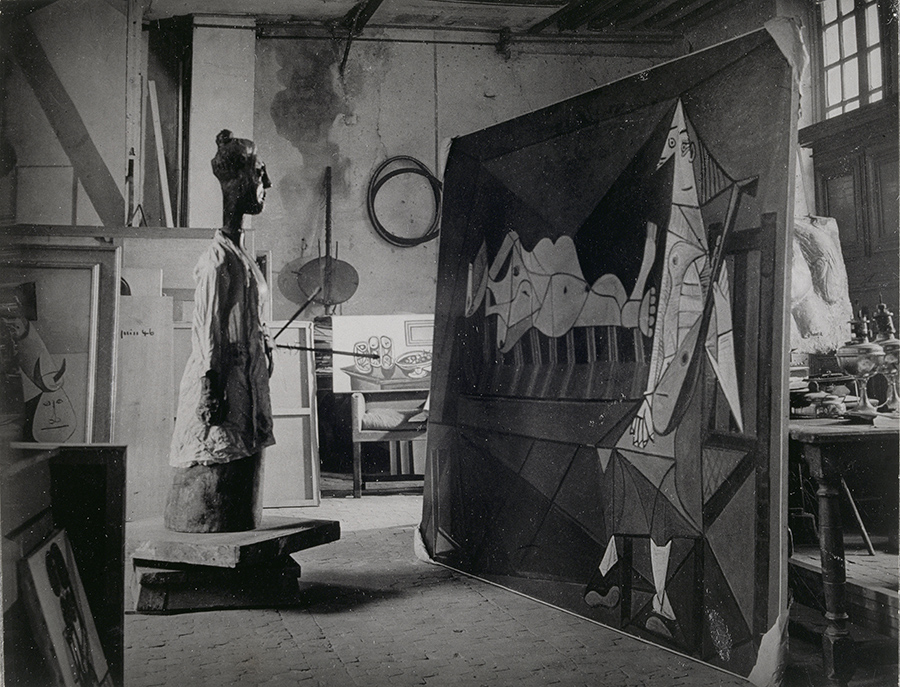In a difficult environment, challenge for art dealers
Kootz arrived in Paris on December 28, 1946 with a clear purpose in mind: to convince Picasso to sell him some pieces so that he could hold the artist's first one-man show in New York after the end of the war. The exhibition would place him in the ranks of the most influential international dealers in an art world that was in major upheaval. His aim was to turn the upcoming show into a grand event, and was already envisioning himself as the painter's official U.S. dealer, replacing his potential rival Paul Rosenberg, who had moved to New York in 1940. Kootz's arrival happened to coincide with a delicate moment in Picasso's relationship with his long-standing dealers Paul Rosenberg and Daniel-Henry Kahnweiler. Although the artist continued to work at his Grands-Augustins studio throughout the war and had produced a considerable number of paintings, sculptures, and prints, the market for modern art, considered degenerate under the Nazi regime, remained fairly weak. The exhibitions of Picasso's recent work at the Galerie Louis Carré in Paris in the summer of 1945 and later in 1946[i] did not meet with the expected success; the paintings were selling poorly. Picasso's two dealers, with whom he had continued to work, wanted to keep the pricing the same as before the war, at least for a year–Kahnweiler even suggested buying off his entire recent production without changing the prices–but the artist would hear none of it. Françoise Gilot recalls that Picasso refused to budge, putting his foot down and demanding a rise in the prices for his works as a matter of principle. Given this background, Kootz's offer came at the best possible moment. The American dealer not only wanted to organize a Picasso exhibition; he also hoped to pay cash for the paintings with no discussion about price. As Brassaï explains, while the artist's output was piling up in Paris, the American market had not had a fresh supply of Picassos for seven years.[ii] So Kootz arrived on that December 28, 1946 laden with gifts, one of which was the exquisite new book on Picasso by Kootz's fellow American Sidney Janis,[iii] with reproductions of studio photographs by Brassaï that the painter had not yet seen and which he immediately devoured. The dealer spoke at length about his taste for young American painters, and after negotiating for a while, Picasso agreed to show Kootz his pieces, but above all, to sell him some of them directly, without intermediaries. Kootz left three days later with nine paintings under his arm: it was probably his greatest masterstroke.





 Summary
Summary